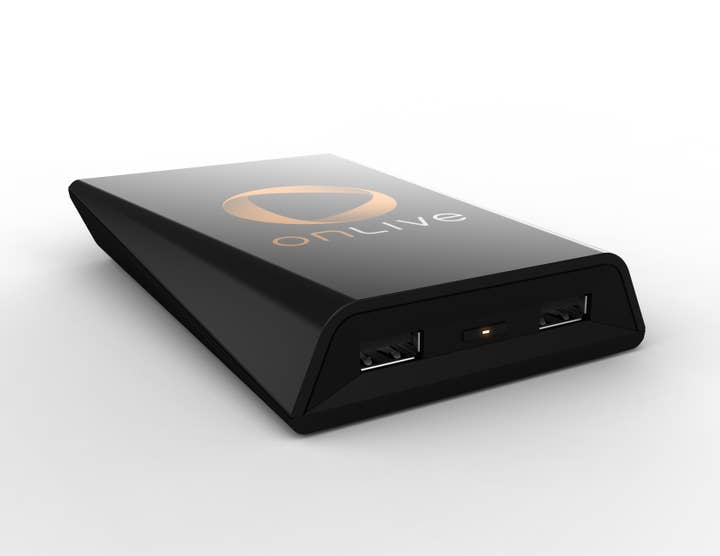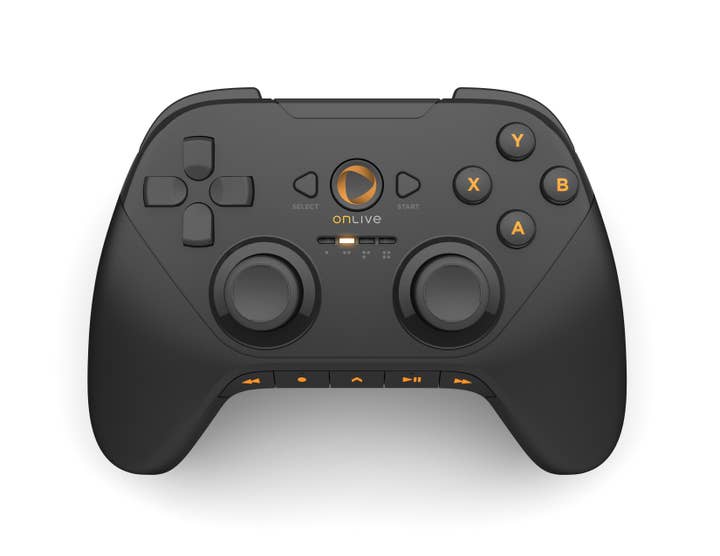OnLive: Assessing the UK Launch
Digital Foundry analyses OnLive - is this really the future of video games?
In its first launch outside of the USA, OnLive has finally arrived in the United Kingdom, capturing the headlines on all the mainstream news outlets and effectively monopolising TV coverage of last week's excellent Eurogamer Expo.
The superb promotion was also backed by a relatively robust offering for those looking to give the service the once-over. Over 100 games at launch is clearly superior to any other platform launch, plus the ability to buy your first game for just £1 is an irresistible opportunity for gamers to put the system to the test. On top of this is the notion of the £6.99 a month subscription offering access to a vast range of catalogue games, including some genuine, recent classics such as Borderlands and Batman: Arkham Asylum.
Positioning itself as a low-cost on-demand games service for the less hardcore, more casual gamer is clearly the way forward for OnLive. Where it scores highly is in terms of convenience and in offering a friction-free portal to "full fat" gaming without having to worry about installs, patches, DRM, system updates or any of the other hundreds of annoyances that have crept into the gaming lexicon. What it isn't is any kind of direct replacement for the current generation consoles or the PC, and the experience it offers simply does not stand up to scrutiny in terms of a direct comparison.
OnLive is nothing short of a technical miracle... the basic notion of being able to stream a 720p video stream and actually make it interactive is nothing short of phenomenal
And yet this is exactly the message that OnLive continually gives us: that cloud gaming is the future, that it is more cost-effective than console gaming, and that the performance of the platform is a match for the current console generation - and beyond. OnLive's approach to interviews continues to be to implement an almost NLP-like approach to get their message across: define the reality through relentless PR and play down or even completely ignore the obvious limitations of the platform.
The thing to make clear is that in terms of the reality of the service on offer, OnLive is nothing short of a technical miracle - even with all the caveats we're about to attach to that. The basic notion of being able to stream a 720p video stream and actually make it in any way recognisably interactive is nothing short of phenomenal. I also share 100 per cent in the platform holder's viewpoint that it is a viable revenue stream for publishers, and provides additional cashback in the development of PC versions of their titles. I also believe that it is now inevitable that cloud streaming in some way, shape or form (not necessarily video streaming) will be the norm for our business within a decade, or at the very least form a key part of it.


However, having now spent much more time with the UK service after analysing the US launch, equally clear is the fact that the platform in its current form almost comes across as a service in waiting. The groundwork has been laid, but it is up to the technology and surrounding infrastructure to catch up - right now, the best that can be said is that it's playable and looks passable - in most cases.
In my initial analysis of the US service, I sought to test the system in a best case scenario - I connected up with a fibre-optic 25mbps connection well within the 1,000 mile range OnLive recommends. With the UK service, I was able to test the system on a number of connections and probably the nadir was a basic 8mbps TalkTalk ADSL line. OnLive complained about high latency and video drop-outs - surprising bearing in mind that the service apparently has a London datacentre and I wouldn't have been more than 40 miles away from it. [Updated: OnLive's PR company has confirmed that there are no datacentres in London, they are in Luxembourg but in an OnLive presentation seen by Eurogamer staff, there was definitely a UK server indicated]. There was no additional devices on the connection, meaning OnLive had 100 per cent of the bandwidth available.
Upgrading to a 50mbps Virgin fibre-optic connection gave me exactly the service I was expecting - ie. a carbon copy of the experience from the US launch. The only difference this time was that we'd traded up our PC for the bespoke OnLive micro-console, a seriously nice. well-designed piece of kit. On our benchmark latency test - Unreal Tournament 3 - we got exactly the same lag measurement of 150ms, but it's fair to say that just as with our US experience, the latency tests were all over the place, with the worse case situation being over 200ms on DiRT 3.
Factoring in additional latency from flatpanel displays of anything up to 50ms and beyond, it's fair to say that the situation is "sub-optimal" in many cases, but the more you sit down and play with it, the more you adjust. It would be great for OnLive to be able to zero in exactly on why Unreal Tournament 3 is so close to the local experience and filter out that expertise to other developers, because the difference is quite extraordinary.
In terms of what Unreal's 150ms latency actually means, let's compare it with some local lag measurements from the Xbox 360: the same game weighs in at 100ms, so feels significantly better, but Bulletstorm and Mirror's Edge give us 133ms - so effectively in these situations, OnLive is just 16ms - or one frame - "slower". It's actually on a par with Killzone 2 running locally on PlayStation 3, which is remarkable. Unfortunately, on the other titles we've tested, the parity simply isn't there and lag remains an issue to differing degrees. How impactful it is on actual gameplay changes on a game by game basis. Inconsistency of frame-rate is another contributing factor that seems to affect lag.








